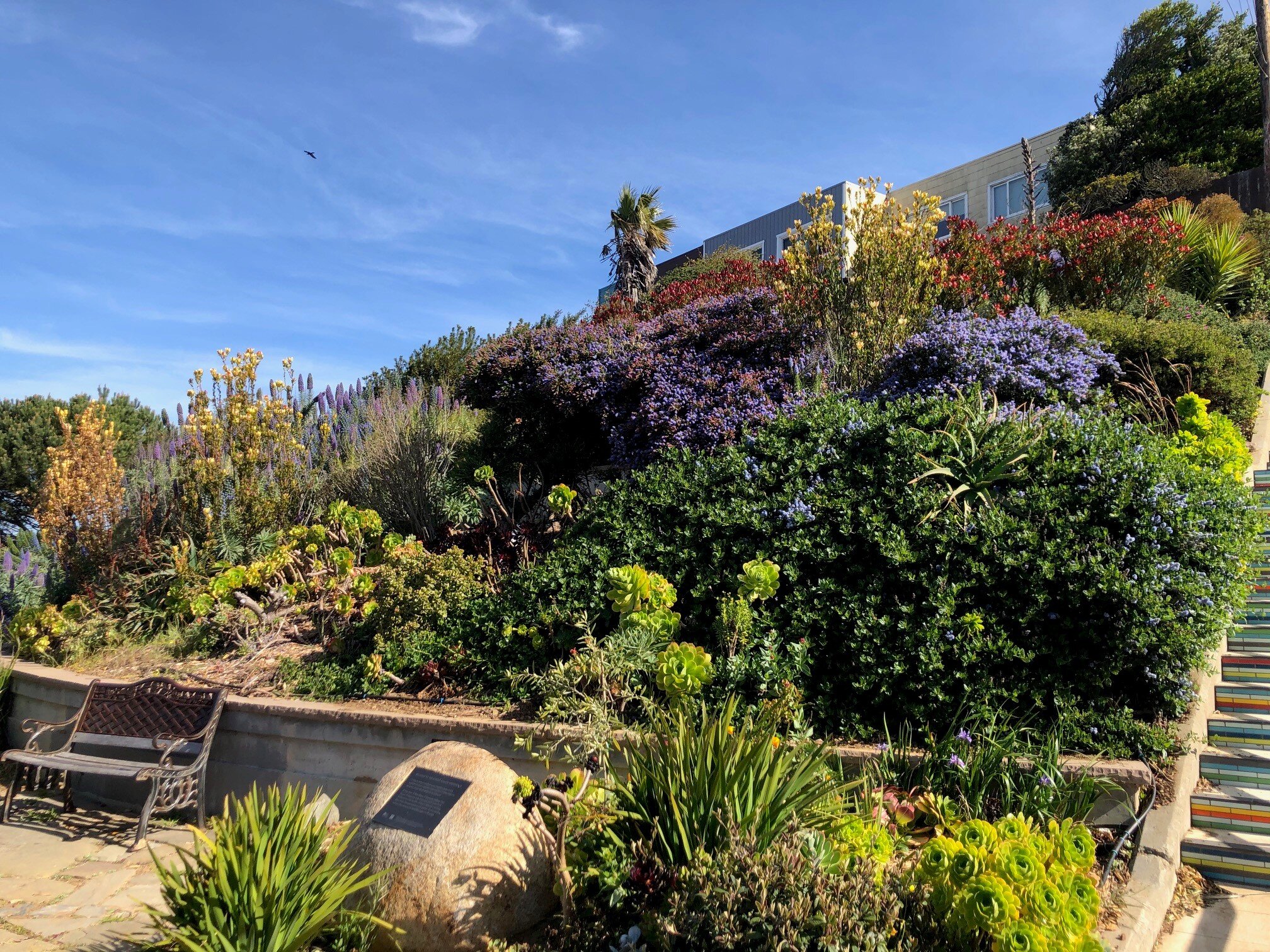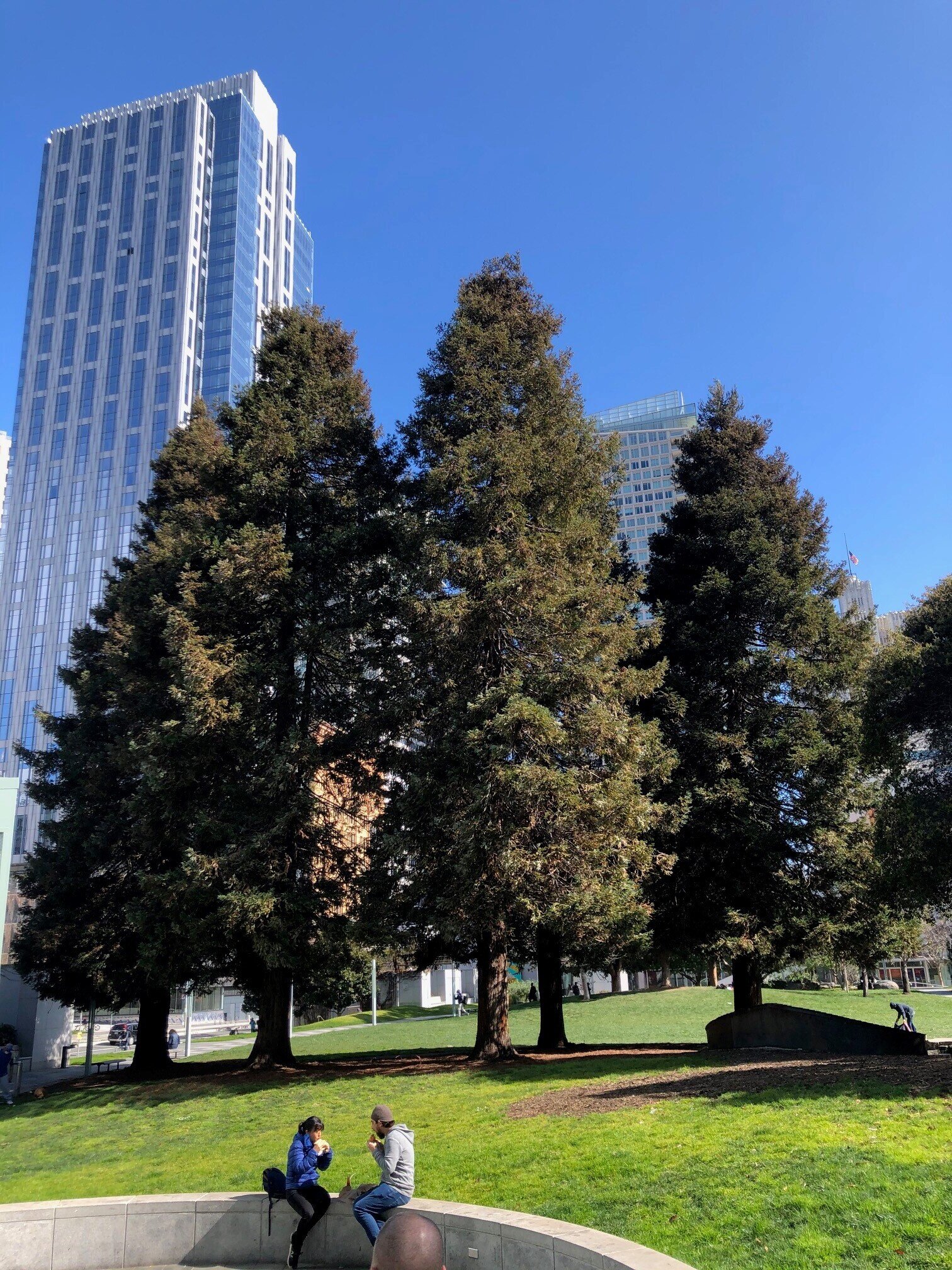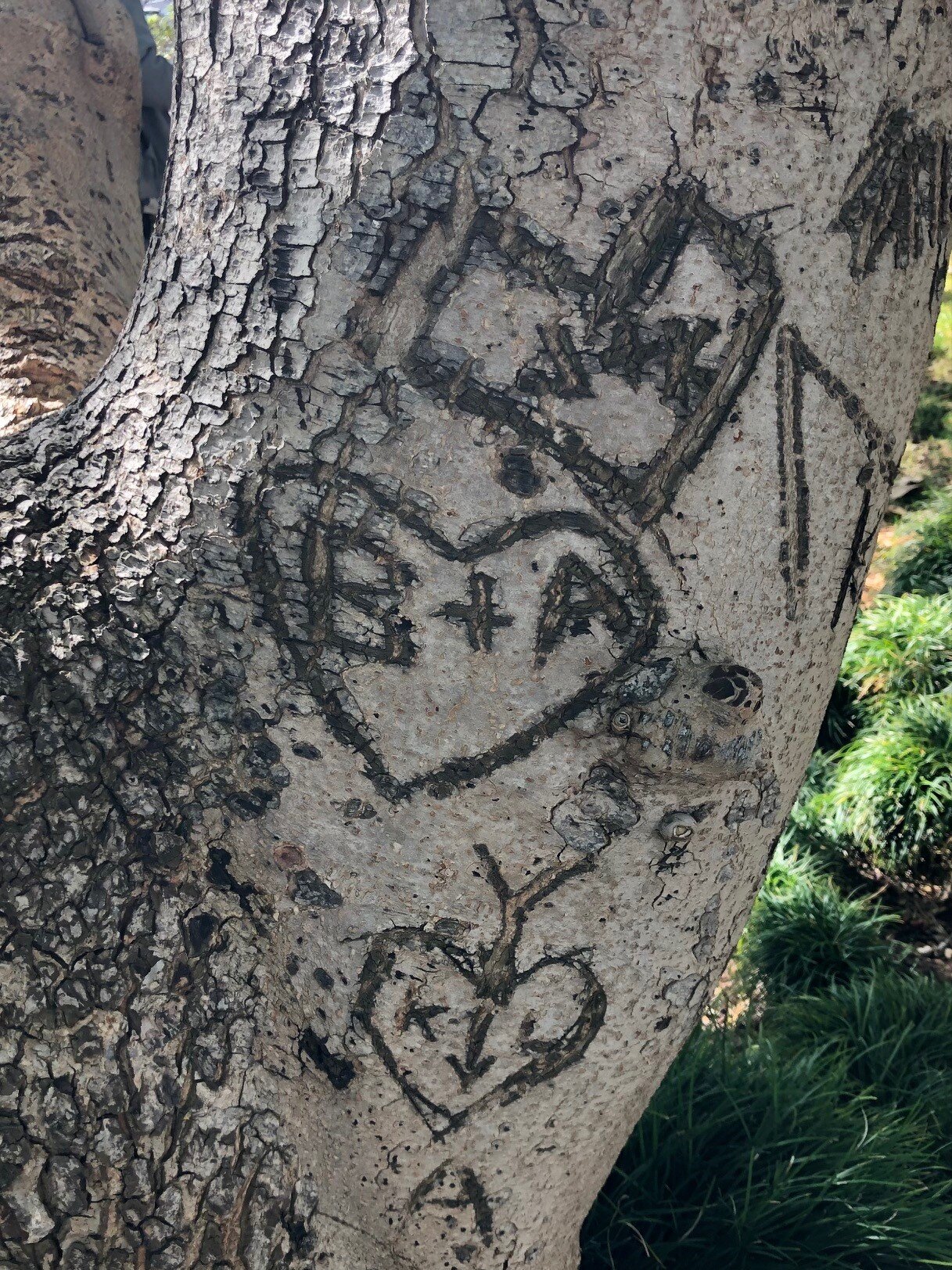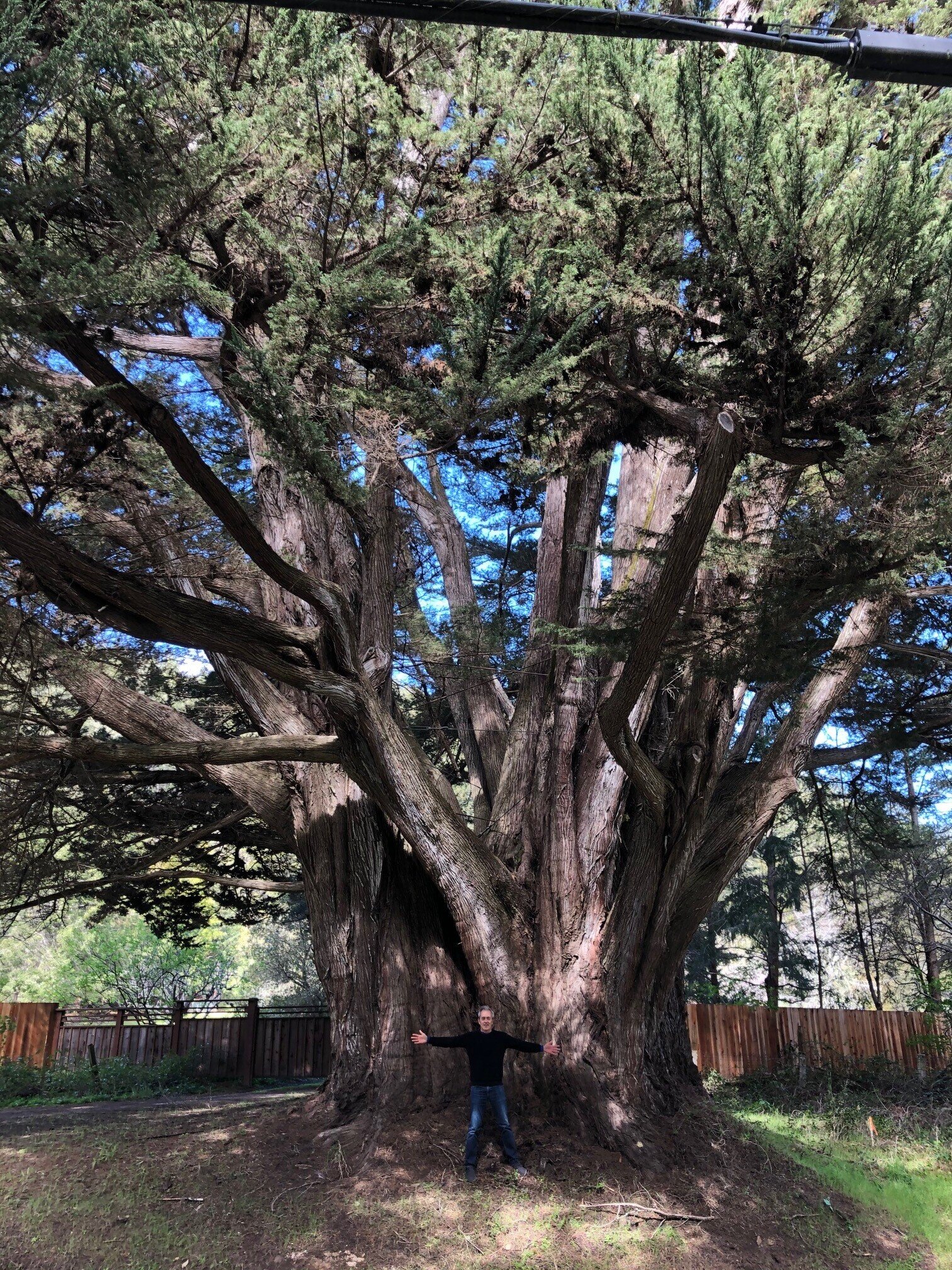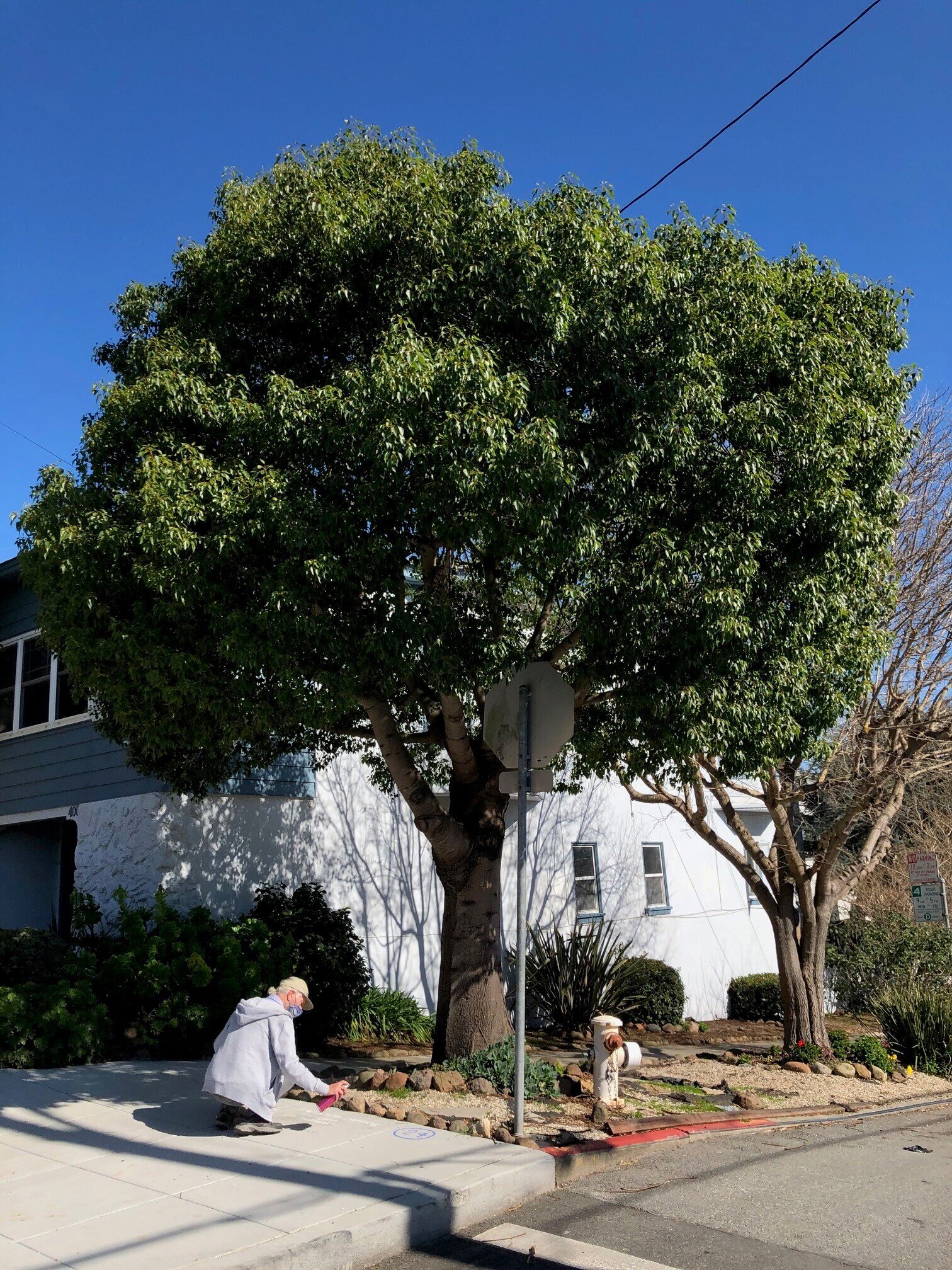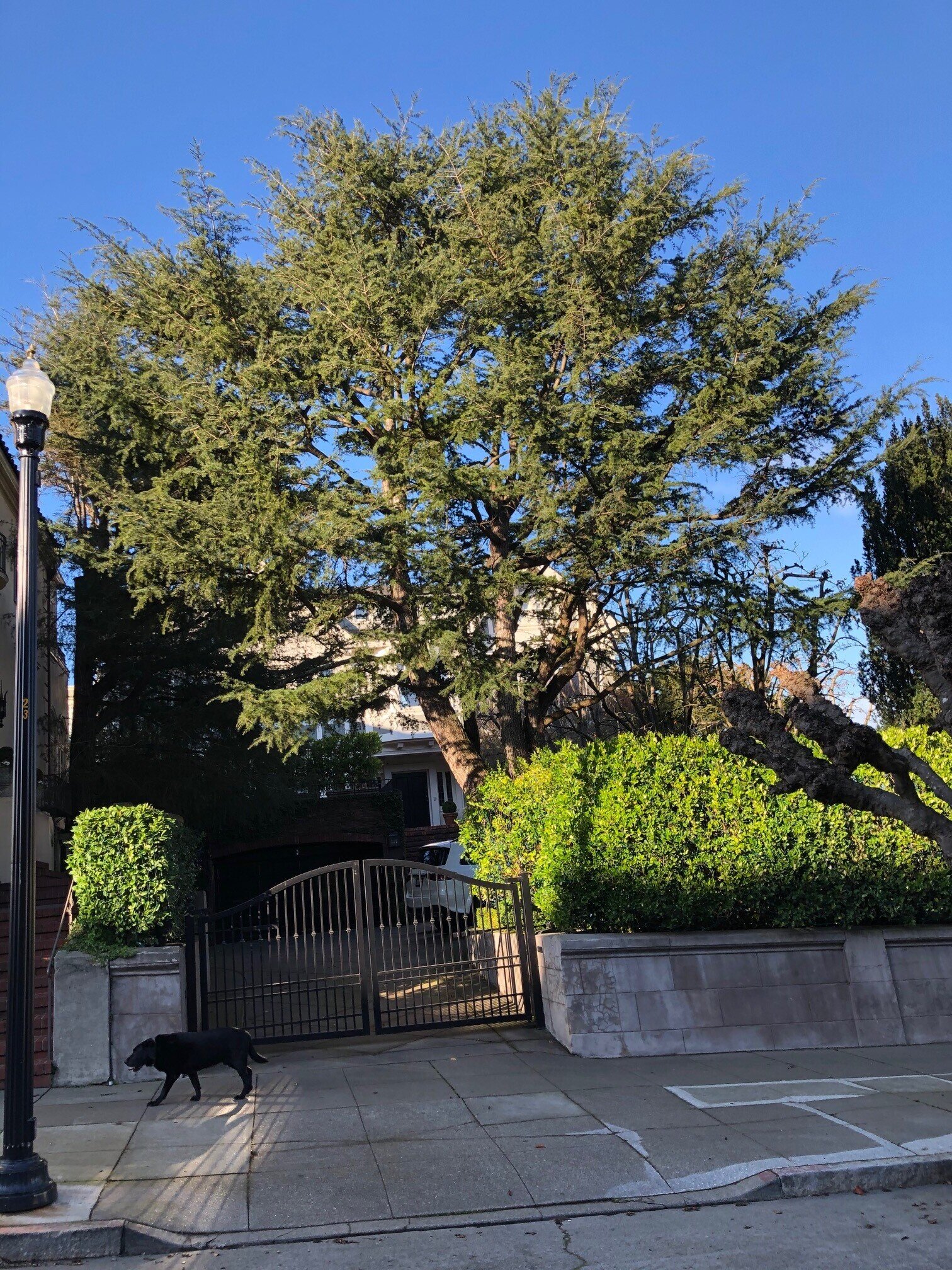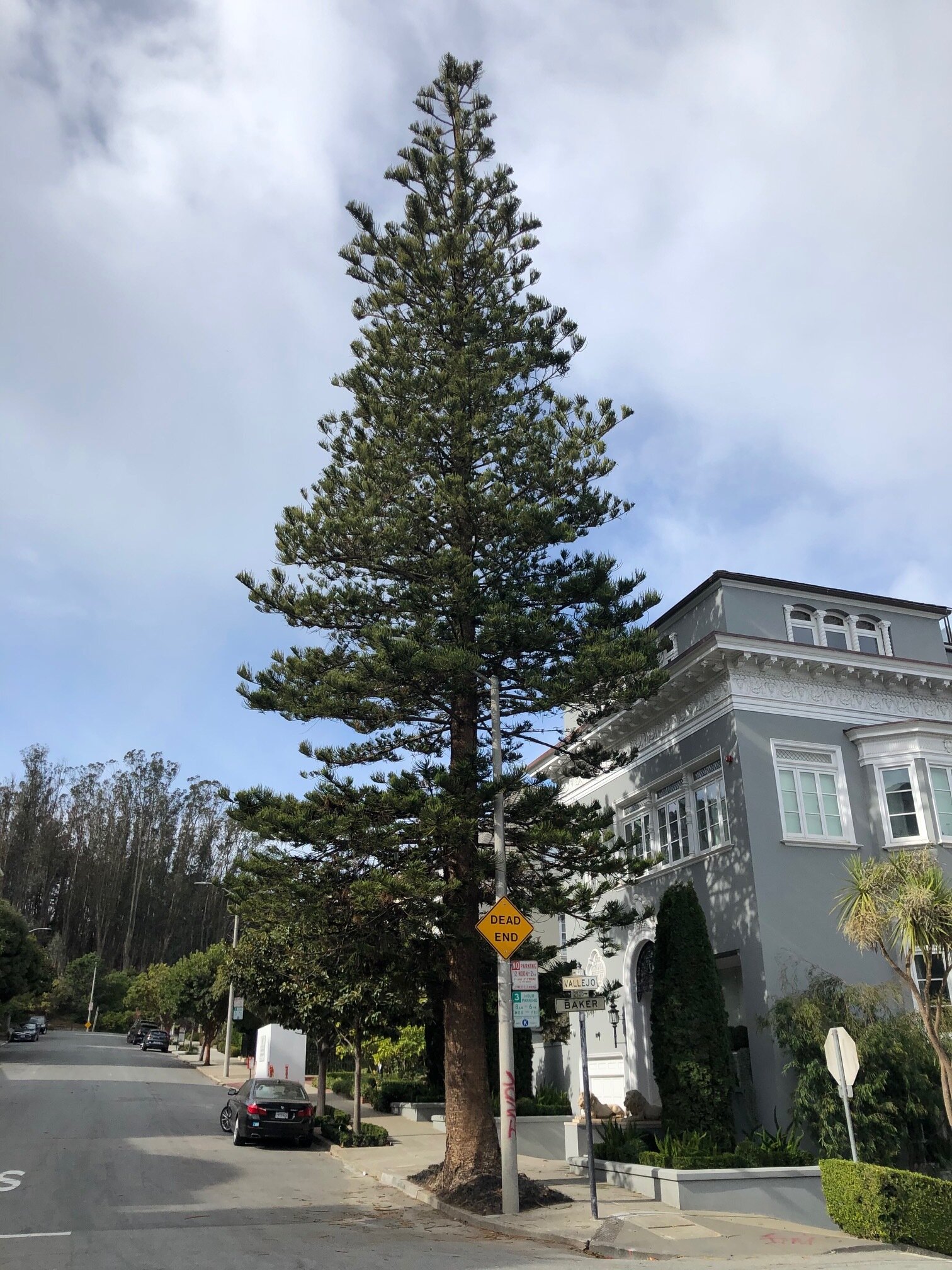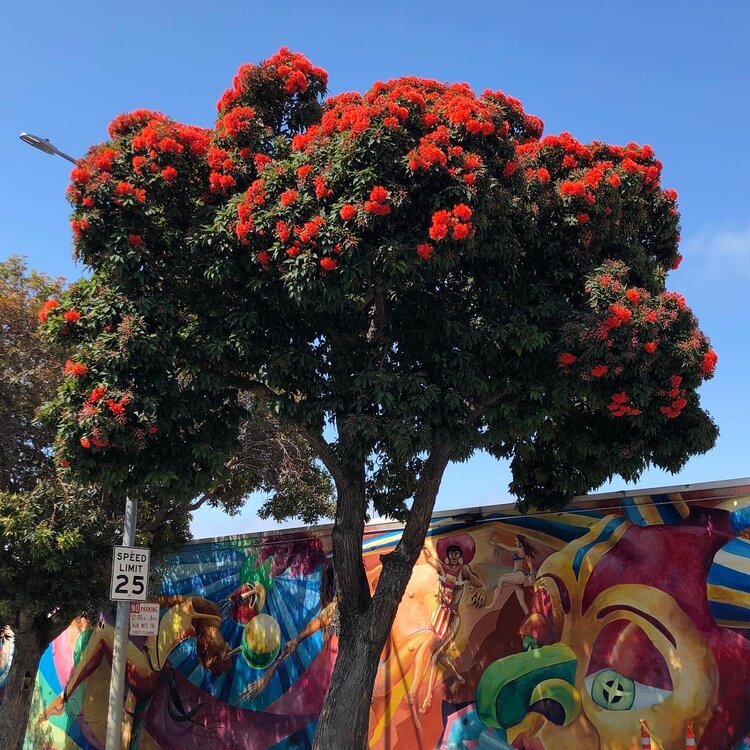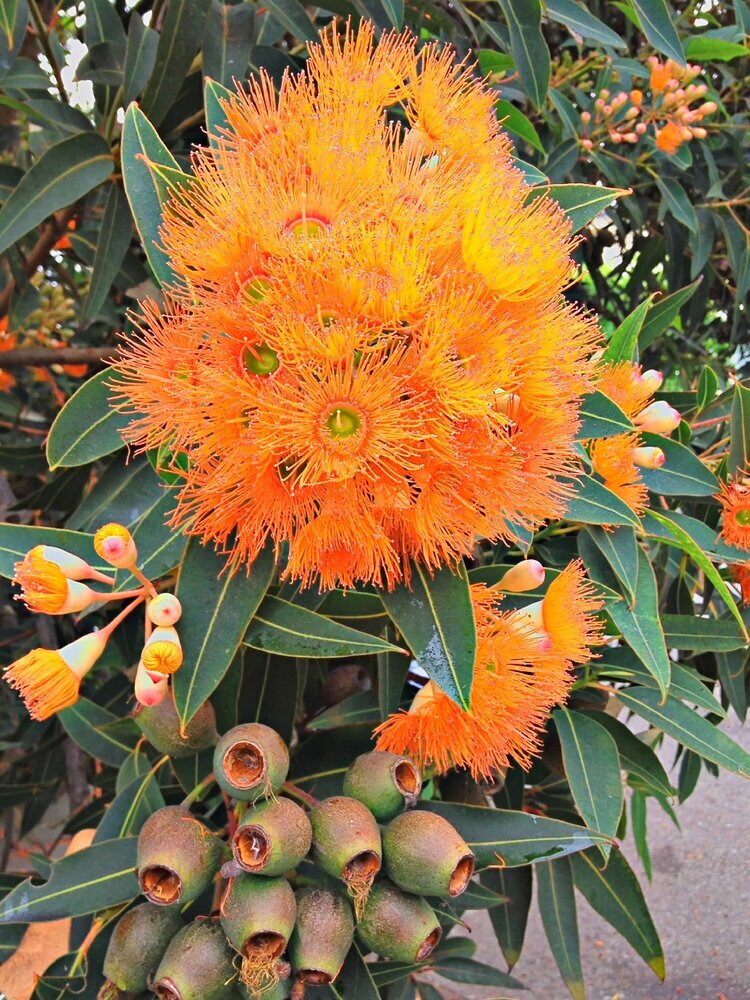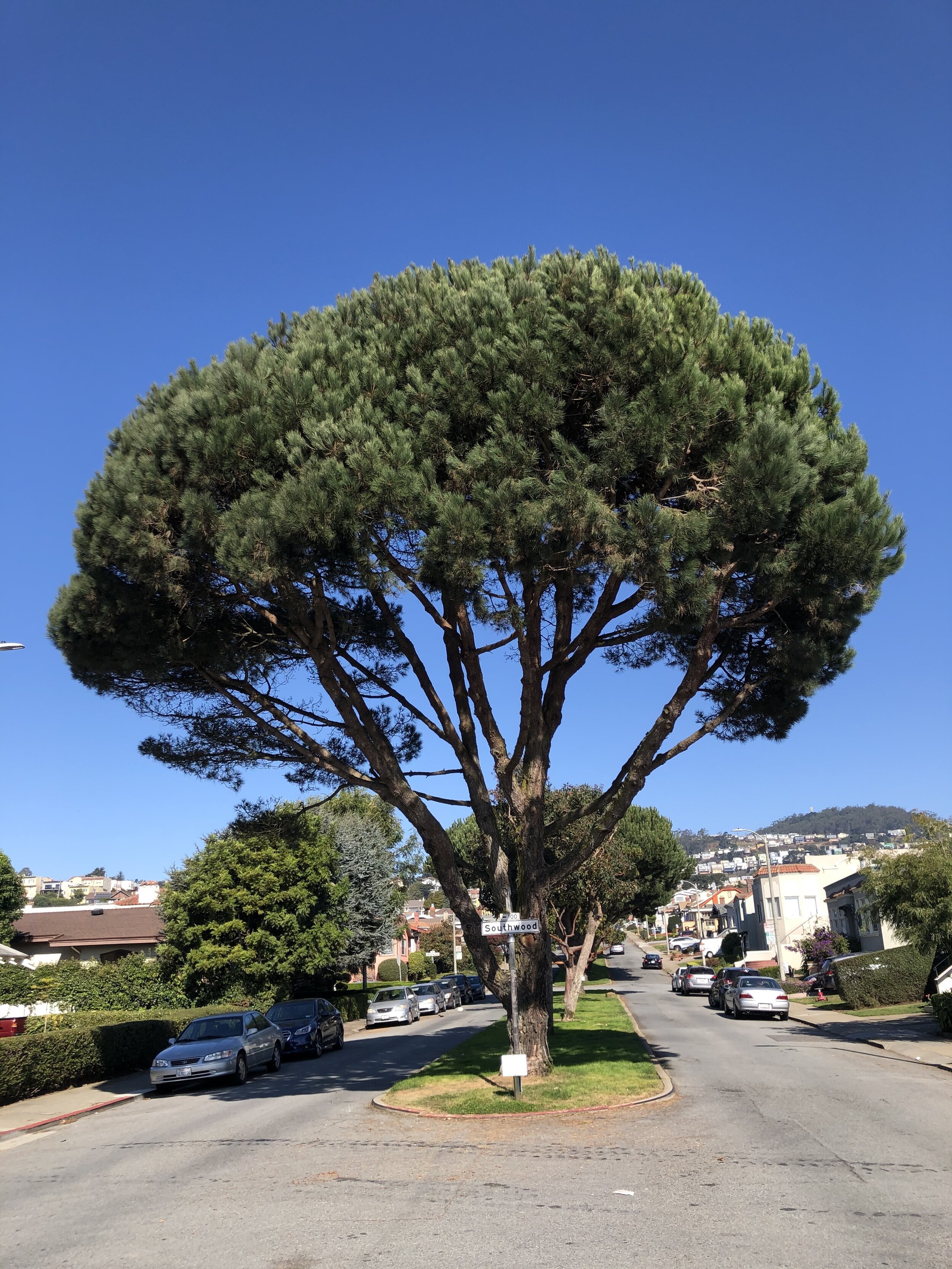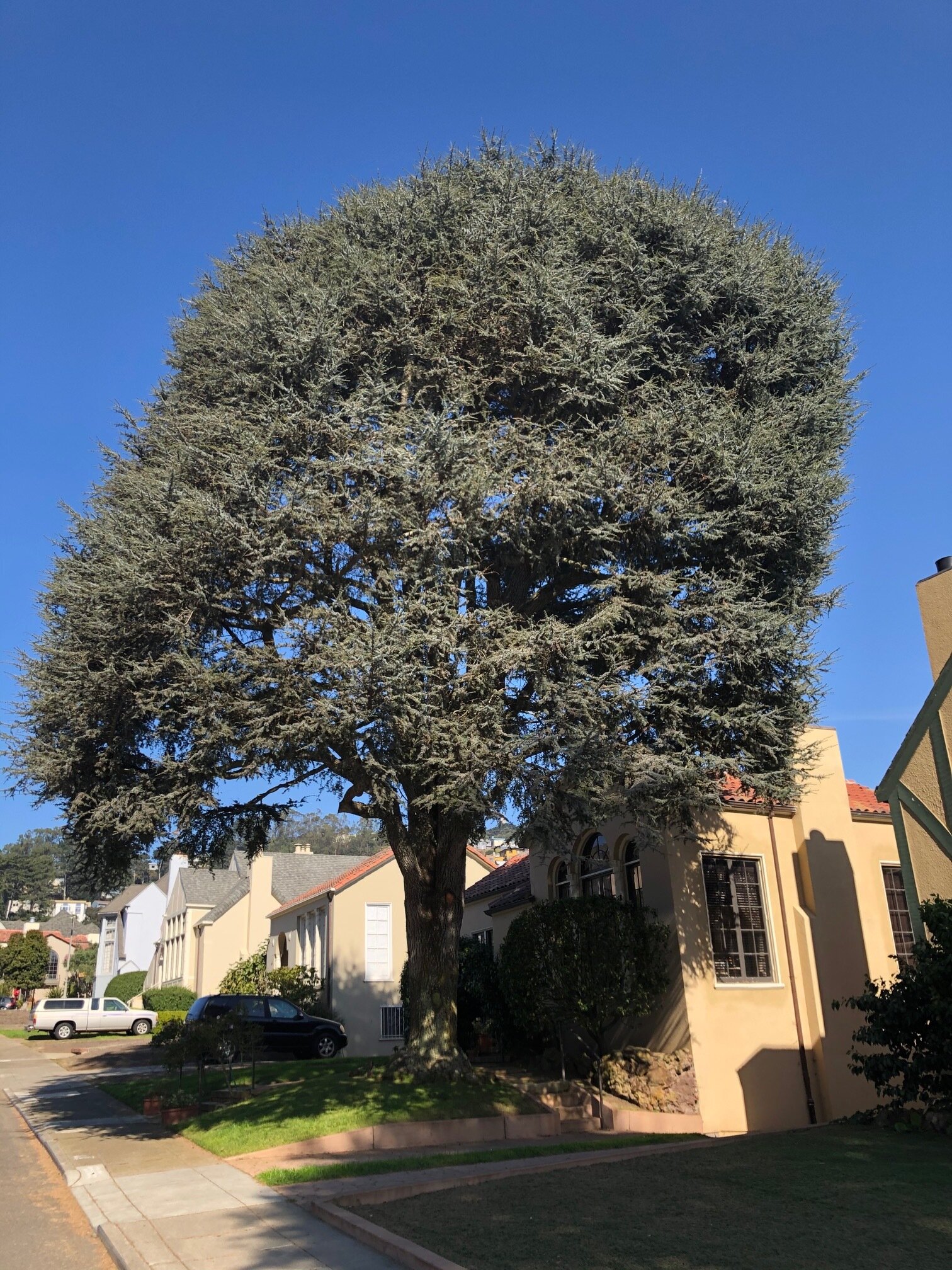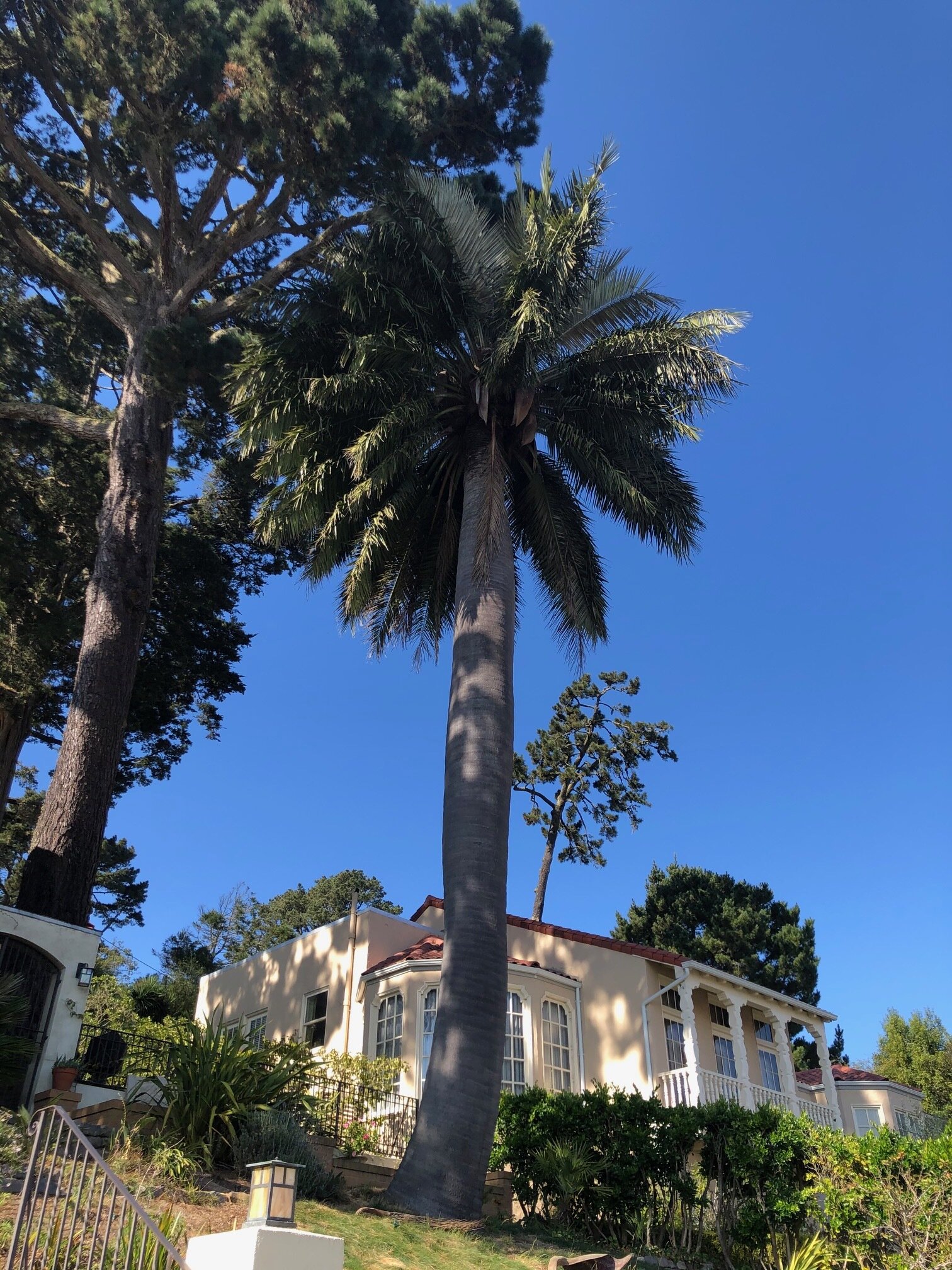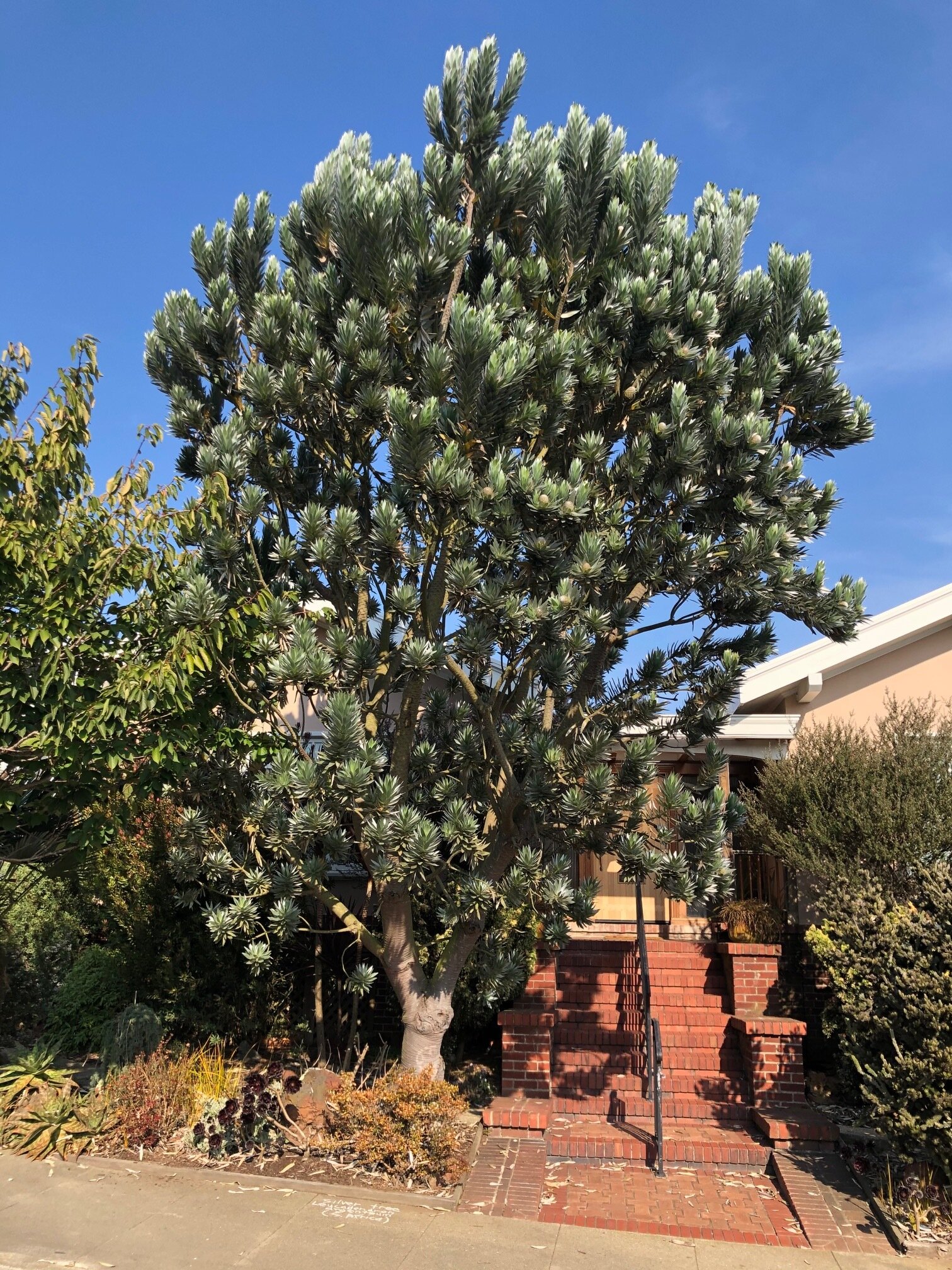Excelsior “Social-Distancing” Tree Tour 4-9-21
In our year of chalking these tree walks, we have realized that certain neighborhoods excel in trees while others offer fewer, either for socio-economic reasons or because the conditions are challenging. The windswept Excelsior District, on the south side of the Alemany Gap, is one of those neighborhoods that has lacks significant tree density, but we were excited to discover tree-rich Athens and Vienna streets, which provide the basis for this week’s tree tour.
Athens-Avalon Greenspace
This walk begins at the base of the neighborhood-maintained Athens-Avalon Greenspace, on Avalon Avenue at Athens Street. It then leads southwest on Athens Street to Brazil Street, crosses the street and heads back northeast to Excelsior Avenue. Turning northwest on Excelsior, the walk continues to Vienna Street, where it heads southwest almost to Brazil again, before crossing the street and heading northeast all the way to Avalon. At Avalon, the walk heads southeast back to its start at the Greenspace. This walk is under a mile in length.
Numbered trees are labeled with common and scientific names and country of origin, all written in white chalk on the sidewalk; accompanying numbers, in blue, run from 1 to 38. White arrows on the pavement provide directions whenever a turn is needed.
Our trio of tree geeks responsible for this tour is the same: Mike Sullivan, author of Trees of San Francisco, Jason Dewees (author of Designing with Palms) and Richard Turner (retired editor of Pacific Horticulture).
Avalon Avenue at Athens Street, northeast side
1. Sidewalk at the base of Greenspace - Marina strawberry tree (Arbutus ‘Marina’), hybrid of Mediterranean species (first introduced in San Francisco)
2. 743 Avalon Avocado tree (Persea americana), Mexico and Central America (within the Greenspace)
Athens Street, Avalon to Excelsior, northwest side
3. 742 Avalon Fern-leaf Catalina ironwood (Lyonothamnus floribundus subsp. asplenifolius), California’s Channel Islands, except Catalina; California native (5 trees are on Athens)
4. 742 Avalon Cook pine (Araucaria columnaris), New Caledonia (a young tree is along the fence on Athens; similar to Norfolk Island pine, but this species will have a pronounced lean or curve at its base)
Closeup of flowers - White champaca (Magnolia x alba)
5. 804 Avalon Norfolk Island pine (Araucaria heterophylla), Norfolk Island, South Pacific (this is the tall, distinctive “Christmas tree” in the rear yard across the street)
6. 218 Athens White champaca (Magnolia x alba), hybrid of SE Asian species (watch for the fragrant flowers tucked within the foliage)
7. 228 Athens Giant yucca (Yucca gigantea), Mexico and Central America
8. 242 Athens Hollywood juniper (Juniperus chinensis ‘Torulosa’ or ‘Kaizuka’), East Asia
9. 250 Athens Akebono flowering cherry (Prunus x yedoensis ‘Akebono’), Japan
**Cross Athens carefully**
Giant yucca (Yucca gigantea)
Athens Street, Avalon to Excelsior, southeast side
10. 259 Athens New Zealand tea tree (Leptospermum scoparium ‘Ruby Glow’), New Zealand
Leaves and flowers: New Zealand tea tree (Leptospermum scoparium ‘Ruby Glow’)
11. 263 Athens Yew-plum pine (Podocarpus macrophyllus), Japan and China (against the house)
12. 267 Athens Water gum (Tristaniopsis laurina), E Australia (this tree grows in streamside locations in the wild, hence the common name; San Francisco’s most commonly planted street tree)
13. 267 Athens Olive (Olea europaea), Mediterranean Basin
River birch (Betula nigra), leaves just budding out
14. 283 Athens Plume albizia (Paraserianthus lophantha), southwest Australia (easily seeds around and considered a weed in the western reaches of Golden Gate Park
Athens Street, Excelsior to Brazil, southeast side
15. 307 Athens Peppermint willow (Agonis flexuosa), Southwest Australia
16. 311 Athens River birch (Betula nigra), eastern USA (2 trees with peeling bark; only street trees of this species we know in San Francisco)
17. 315 Athens Catalina cherry (Prunus ilicifolia subsp. lyonii), Channel Islands of California
18. 351 Athens Bearss lime (Citrus x latifolia), hybrid of key lime and lemon
Bearss lime (Citrus x latifolia)
19. 395 Athens Primrose tree (Lagunaria patersonii), Australia and South Pacific Islands
Athens Street, Brazil to Excelsior, northwest side
Majestic Beauty Indian hawthorn (Rhaphiolepis x ‘Montic’)
20. 378 Athens Majestic Beauty Indian hawthorn (Rhaphiolepis x ‘Montic’), Southern China and Japan to southeast Asia
21. 374 Athens Lemon bottlebrush (Callistemon citrinus), Eastern Australia
22. 366 Athens Grecian bay tree (Laurus nobilis), Mediterranean Basin (this is the bay leaf of culinary value; crush a leaf to smell it)
23. 346 Athens Bloodgood Japanese maple (Acer palmatum ‘Bloodgood’), Korea and Japan
24. 342 Athens Peruvian pepper tree (Schinus molle), Peru to Chile
25. 314 Athens Evergreen pear (Pyrus kawakamii), Taiwan
Excelsior Avenue, Athens to Vienna, southwest side
26. 727 Excelsior Canary Island date palm (Phoenix canariensis), Canary Islands, Spain(2 trees across the street in the rear yard)
Vienna Street, Excelsior halfway to Brazil, southeast side
27. 347 Vienna London plane tree (Platanus x acerifolia), hybrid of Eastern USA species and European species
28. 351 Vienna Callery pear (Pyrus calleryana), China and Vietnam (this species seldom does well in San Francisco)
29. 351 Vienna Brush cherry (Syzygium australe, previously knows as S. paniculatum, a different species), Eastern Australia
**Cross street carefully**
Vienna Street, northeast to Excelsior, northwest side
Bronze loquat (Rhaphiolepis deflexa, syn. Eriobotrya deflexa)
30. 358 Vienna Mayten (Maytenus boaria), Chile
31. 354 Vienna Bronze loquat (Rhaphiolepis deflexa, syn. Eriobotrya deflexa), China, Taiwan, and Vietnam
Weeping bottlebrush (Callistemon viminalis)
32. 318 Vienna Southern magnolia (Magnolia grandiflora), southeast USA
Vienna Street, Excelsior to Avalon, southeast side
33. 701 Excelsior Pygmy date palm (Phoenix roebelenii), Southern China, Laos, Vietnam (4 trees are in the sloping lawn on Vienna)
34. 701 Excelsior Weeping bottlebrush (Callistemon viminalis), Eastern Australia (tree is on Vienna)
**Note the beautiful mosaic wall above the lawn**
35. 234 Vienna Carob (Ceratonia siliqua), Eastern Mediterranean Basin (tree is across the street; seed pods can be used to make a chocolate substitute—though not recommended for true chocolate lovers)
36. 219 Vienna Mexican fan palm (Washingtonia robusta), Baja California and Sonora, Mexico
Avalon Street, Vienna to Athens, northeast side
37. 195 Vienna Purple-leaf plum (Prunus cerasifera), Eurasia (4 shapely trees on Avalon; formerly San Francisco’s most planted street tree)
38. 725 Avalon Victorian box (Pittosporum undulatum), E Australia
This walk ends here, a few yards southwest of its beginning at the Athens-Avalon Green Space.
Our regular commercial: This walking tour was organized by Mike Sullivan, author of The Trees of San Francisco and webmaster of www.sftrees.com; Jason Dewees, horticulturist at Flora Grubb Gardens and author of Designing with Palms; and Richard Turner, retired editor of Pacific Horticulture magazine . You can follow Mike and Jason on their tree-themed Instagram pages at @sftreeguy and @loulufan. Richard edited another great book on San Francisco trees: Elizabeth McClintock’s Trees of Golden Gate Park. If you’re a tree enthusiast, buy all three books!

